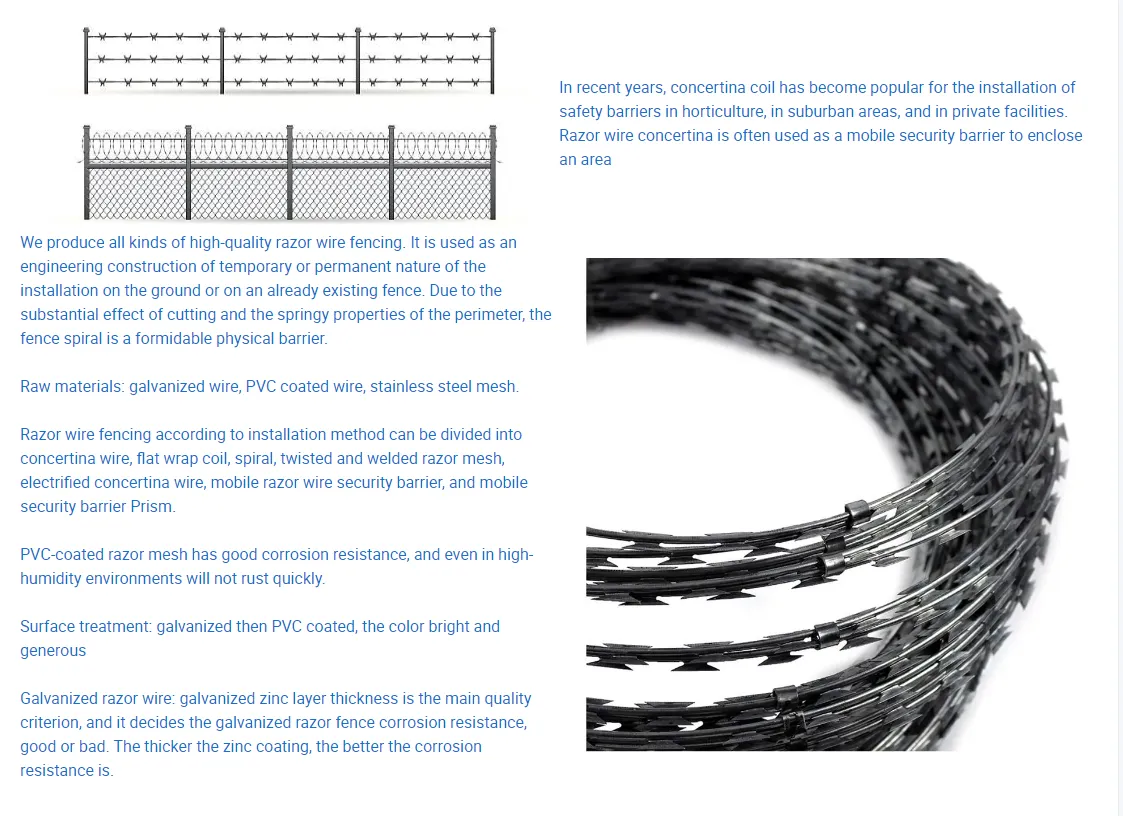Cutting Perforated Metal Sheets A Comprehensive Guide
Perforated metal sheets are essential components used across various industries, from architecture and construction to automotive and filtration systems. These sheets enhance features such as airflow, aesthetics, and functionality while providing durability and strength. The process of cutting perforated metal sheets requires precision and specialized techniques to ensure optimal results, making it vital for manufacturers and fabricators to understand the best practices involved.
The primary consideration in cutting perforated metal sheets is the material type. Common materials include aluminum, stainless steel, and mild steel, each offering unique benefits. Aluminum is lightweight and resistant to corrosion, making it suitable for outdoor applications, while stainless steel provides excellent strength and longevity. Mild steel, though prone to rust, is cost-effective and widely used in industries where weight is not a primary concern.
Once the appropriate material is selected, the next step is to determine the cutting method. There are several techniques available, each with advantages depending on the specific requirements of the project. Popular methods include shearing, laser cutting, waterjet cutting, and CNC plasma cutting.
Shearing is a mechanical process that uses a shear blade to cut the metal sheet into desired sizes quickly
. It's cost-effective for larger production runs but may produce rough edges that require additional finishing.Laser cutting employs high-powered lasers to achieve intricate cuts with exceptional precision. It is ideal for complex designs and allows for detailed customization. However, it can be more expensive, particularly for thicker sheets.
cutting perforated metal sheet

Waterjet cutting utilizes high-pressure water mixed with abrasives to slice through metal. This method produces clean cuts without heat-affected zones, minimizing distortion. It’s particularly useful for thicker materials and those sensitive to temperature changes.
CNC plasma cutting uses a plasma torch to cut through metal, providing high speed and efficiency. It's commonly used for sheets with greater thickness but may require subsequent finishing to achieve desired edge quality.
Regardless of the cutting method selected, planning is crucial. Measuring and marking the sheet accurately ensures that cuts are made precisely where needed. Utilizing CAD software for design layout can significantly reduce waste and improve efficiency during cutting.
After the cutting process, further treatment might be necessary to achieve the final product. This can include deburring, polishing, or applying protective coatings to enhance durability and aesthetics. Attention to detail in these finishing touches can significantly affect the performance and appearance of the final product.
In conclusion, cutting perforated metal sheets is a multifaceted process that requires careful consideration of materials, cutting methods, and finishing processes. By understanding each aspect, manufacturers can optimize production, minimize waste, and create high-quality components that meet the diverse needs of various applications. Whether for architectural elements, filtration systems, or industrial machinery, properly cut perforated metal sheets play a vital role in modern manufacturing.
-
The Best Metal Mesh Solutions: Expanded Aluminum Metal vs. Expanded Stainless Steel Metal
NewsSep.10,2024
-
Round Perforated Sheets vs. Hexagonal Perforated Sheets vs. Embossed Perforated Sheet Metal
NewsSep.10,2024
-
Perforated Metal Sheets
NewsSep.10,2024
-
Experience The Excellence Of Stainless Steel Grating
NewsSep.10,2024
-
Discover the Versatility Of Metal Mesh Expanded Forming Machines
NewsSep.10,2024
-
Discover The Advantages Of Steel Grating For Sale
NewsSep.10,2024
Subscribe now!
Stay up to date with the latest on Fry Steeland industry news.

